High Sierra Segment 3: Mammoth Lakes to (nearly) Sonora Pass
Editors note: In the interest of timeliness, this post was written before any reports from the prior month or so. I’ll get around to writing those eventually.
Days 44 – 51, June 7 – 14, PCT miles ~903 – ~990
In hindsight, I really needed more than one zero in Mammoth. The last section had been truly wonderful, with our group transiting tough terrain safely and efficiently, enjoying better weather and even a few chances to take in the sights. But though I was in great spirits and feeling at the top of my game, the sheer exertion over so many days had taken its toll on my body. No muscles were sore, and my lungs seemed to deliver ample oxygen even at altitude (well, altitudes below 12,000 feet or so. Forester was rough.). Rather, I was running up against metabolic limits, limits that simply do not yield to any level of motivation or positive thinking.
Naturally, I did my best to rest and shovel in calories during my brief stay with my wonderful hosts, family friends Bob and Stephanie Johnson. I gave serious thought to staying longer. I didn’t want to separate from my group, and so I went back in. As an aside, one of my trekking poles broke when I extended it at the trailhead. This forced a delay while the awesome folks at Mammoth Mountaineering Supply tried at first to fix it, before admitting defeat and helping me with the warranty claim as well as hooking me up with a bent, but still serviceable aluminum pole to use in the meantime. We finally left, but within a day or two of being out I knew I hadn’t been able to recover nearly as well as I’d hoped. My body simply couldn’t go like it had on the previous stretches, and more often than not I watched my friends pull away from me when I used to be able to keep up.
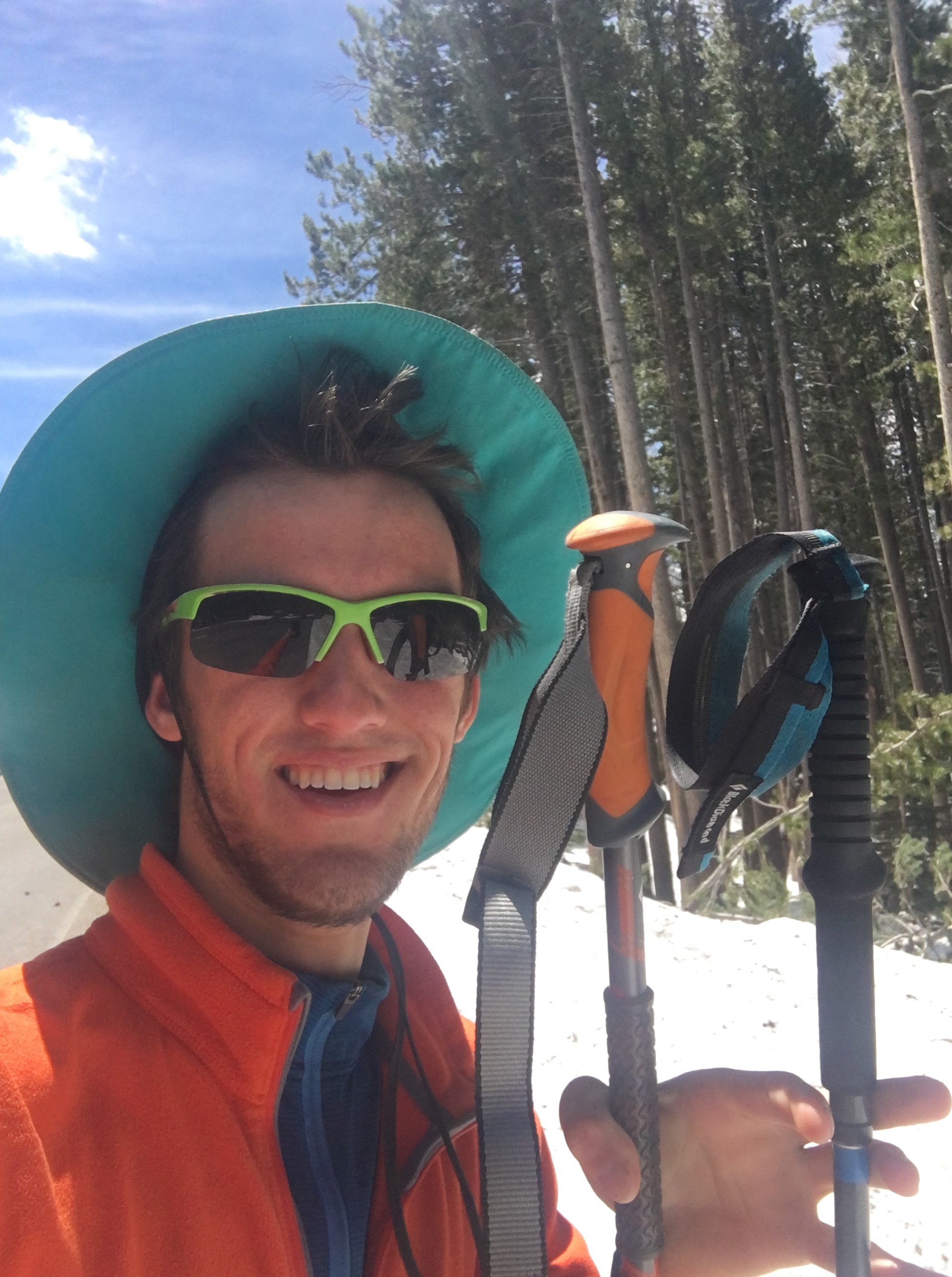 All smiles with my mismatched poles.
All smiles with my mismatched poles.
Every morning I would wake up to find my capabilities diminished even further. One of my mental hobbies on-trail was to think of analogies, and I kept being reminded of the time I inadvertently took off in a small aircraft with only half of the engine’s spark plugs actually firing. I remember keeping my cool back then and flying the aircraft best I could: keeping the nose low to avoid a stall even if it meant we were barely climbing. Winding through Lyell Canyon into Tuolumne Meadows, I imagined myself flying my body the same way: having much less power to work with than I would like, but extracting the best performance possible given those limits.
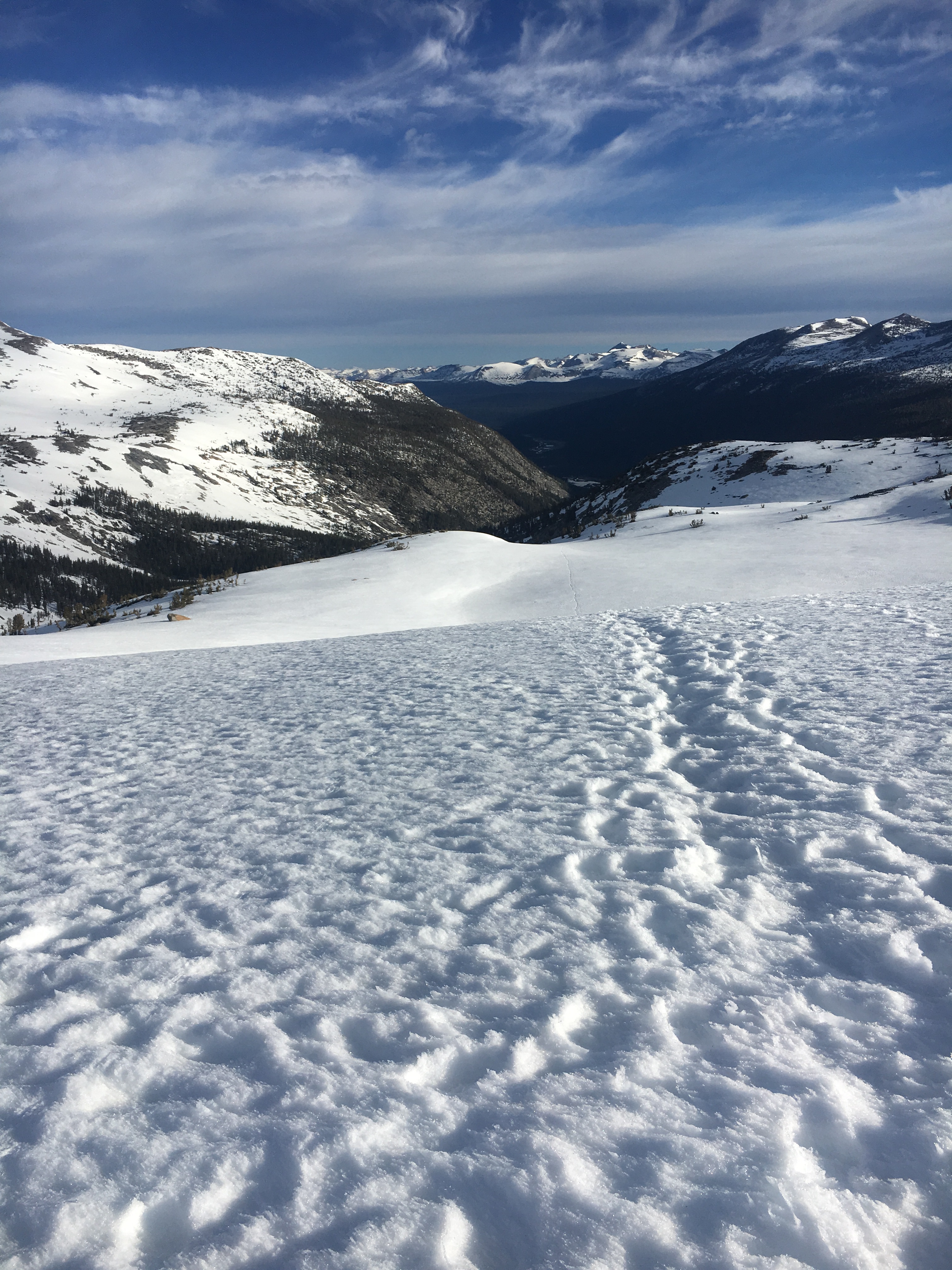 Still a beautiful place.
Still a beautiful place. 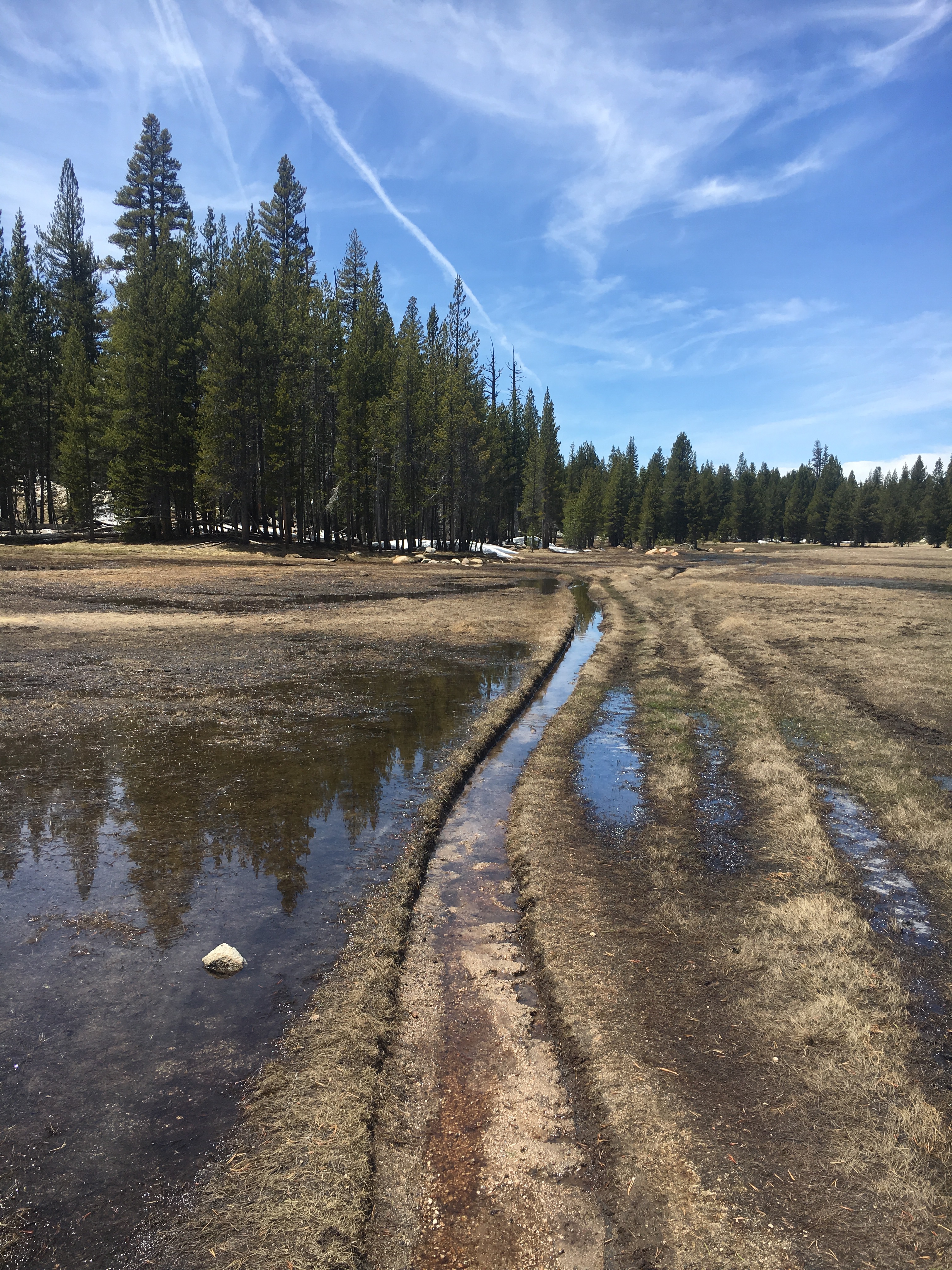 Flooded trail in Lyell Canyon.
Flooded trail in Lyell Canyon.
That day in the airplane, the situation was remedied by turning a key one click from “R” to “Both”, returning the Lycoming four-cylinder to its full, though still modest, power output. The body is a somewhat more complicated machine. As expected I caught up to the rest of my group in Tuolumne Meadows. They wanted to press on another 3 miles or so. Although they were genuinely concerned that I wasn’t doing so hot, I also knew they were anxious to proceed. Speed has its advantages, especially with the temperature rapidly increasing and trail conditions changing faster than any of us anticipated. If at all possible I would have stuck with them, likely finishing the segment much like the last two: exhausted at having pushed my limits again but glad I did so and impressed to have moved so far in such terrain.
But I had to be honest with myself, the energy simply wasn’t there. After saying my goodbyes, I walked away feeling fully in-control for the first time in a while. I still had several things going for me, and I was excited to be able to put my needs first. To be clear, there is certainly safety in numbers, and in most cases I wouldn’t recommend hiking alone in these conditions.
Considering my exact circumstances, I still think it was the right choice. In earlier segments, I had to work hard to keep up, but by and large I did. This time however I found myself well behind every afternoon, rolling into camp with less and less time to recover for the challenging days ahead. I found myself consistently late every morning no matter how much time I gave myself to get ready; my body simply did not want to move. I felt terrible making everyone wait, which is so funny because in my off-trail life I’m always on-time. To my group’s credit, nobody yelled at me for it. I hope I would have shown the same patience had the roles been reversed. And so after those miserable departures I quickly found myself rushing to keep my position at the rear of the group, precisely when I should have slowed down instead. This had consequences. I took plenty of falls on snow when I shouldn’t have thanks to sloppy footwork, sometimes bending the already-bent aluminum trekking pole enough that I was forced to gingerly bend it back.
Once I even took a big step onto a small log bridge, only to immediately slip on ice and do a half cannonball/half backflip into an ice-cold pool. Nobody noticed, and by the time I dragged myself out the group was halfway across a meadow. I yelled for them to wait up in a voice so weak it surprised me, and they waited while I wrung out my fleece in the sun. Luckily I had enough dry layers left and the temperature was mild, so the consequences from that event were not major. One of my groupmates lent me some dry gloves, which I greatly appreciated. We pressed on, but the message was clear: I was now going too fast to safely handle myself, and I could have got myself into much worse had I tried to continue at that pace.
I spent that night at the Tuolumne Meadows Ski Hut, where I counted my food and saw I still had over 8 days worth. My goal was to focus wholly on taking care of myself, hiking only the minimum distance necessary to safely reach Sonora Pass with the resources I had. With no more high passes ahead, it was also easy to imagine the terrain becoming somewhat milder– perhaps with a bit more dry trail peeking through the snow.
 Haibao staring at a Cold War era water drum inside the hut
Haibao staring at a Cold War era water drum inside the hut
At first, the strategy worked well. Following the Tuolumne River north, I easily stitched together dry trail and snowy segments, crossing the river safely on a bridge even though its approaches were under about a foot of water on each side. Moving fewer miles at a comfortable pace, the fatigue had ceased to worsen.
Neither, however, did it improve. In addition, the sudden temperature increase that had made walking so pleasant was now sending ever-increasing amounts of snowmelt down every creek. I occasionally received tips via InReach message from a friend ahead, information that was tremendously helpful as I did my best to safely negotiate each crossing.
Yet conditions were changing so rapidly that as the group pulled away by 12, 24, then 36 hours, the situation I encountered on the ground no longer matched the intelligence I received. It was always worse. I found a key log crossing now overtopped by swift water, necessitating a wait on the opposite shore until morning when the flow was lower and I was able to cross. Most of the later crossings were like this, with me taking into account the information from ahead but ultimately having to use my own patience and creativity to find a viable spot to cross, then all of my technical skill and what was left of my strength to execute.
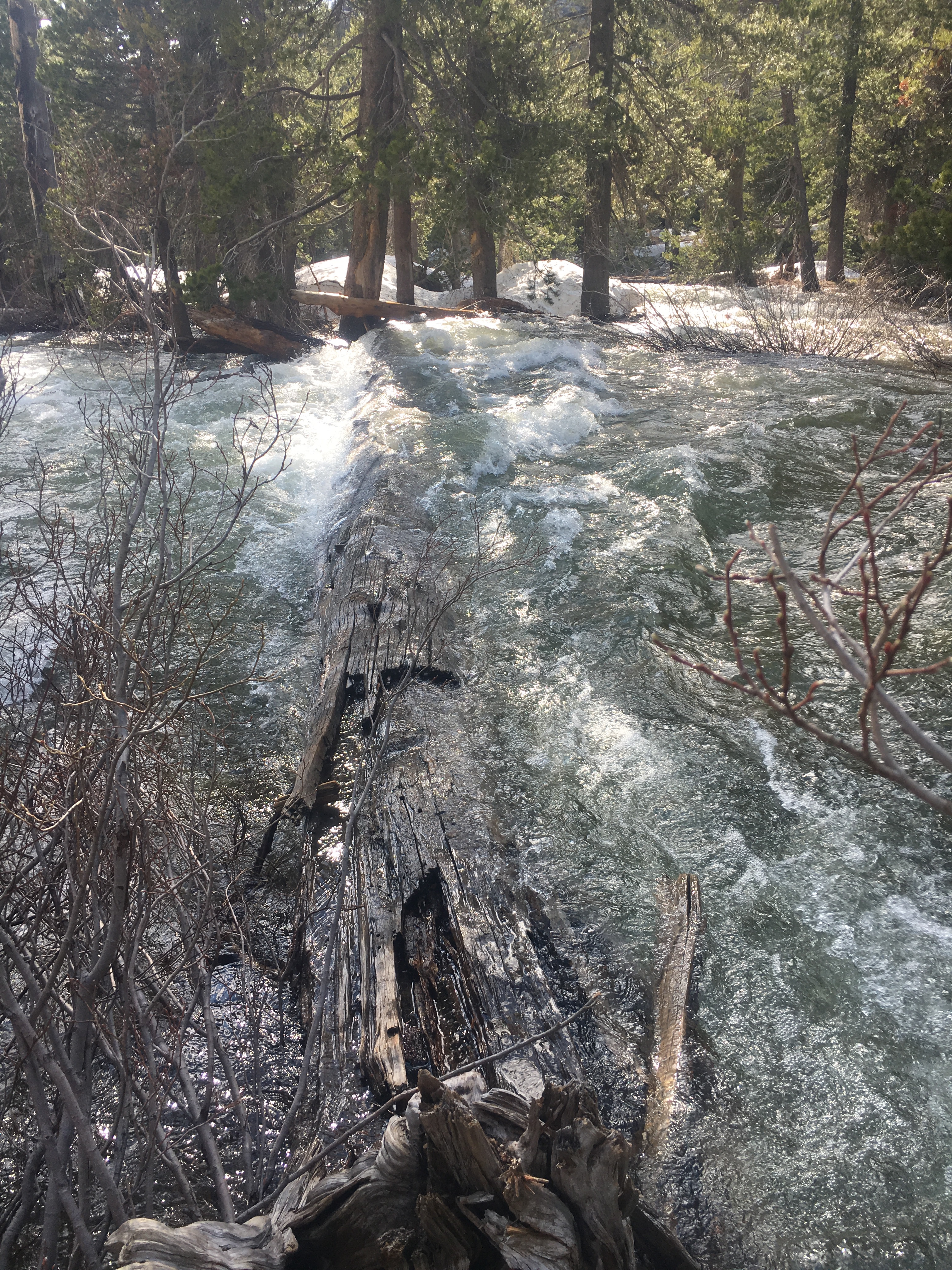 No thanks.
No thanks. 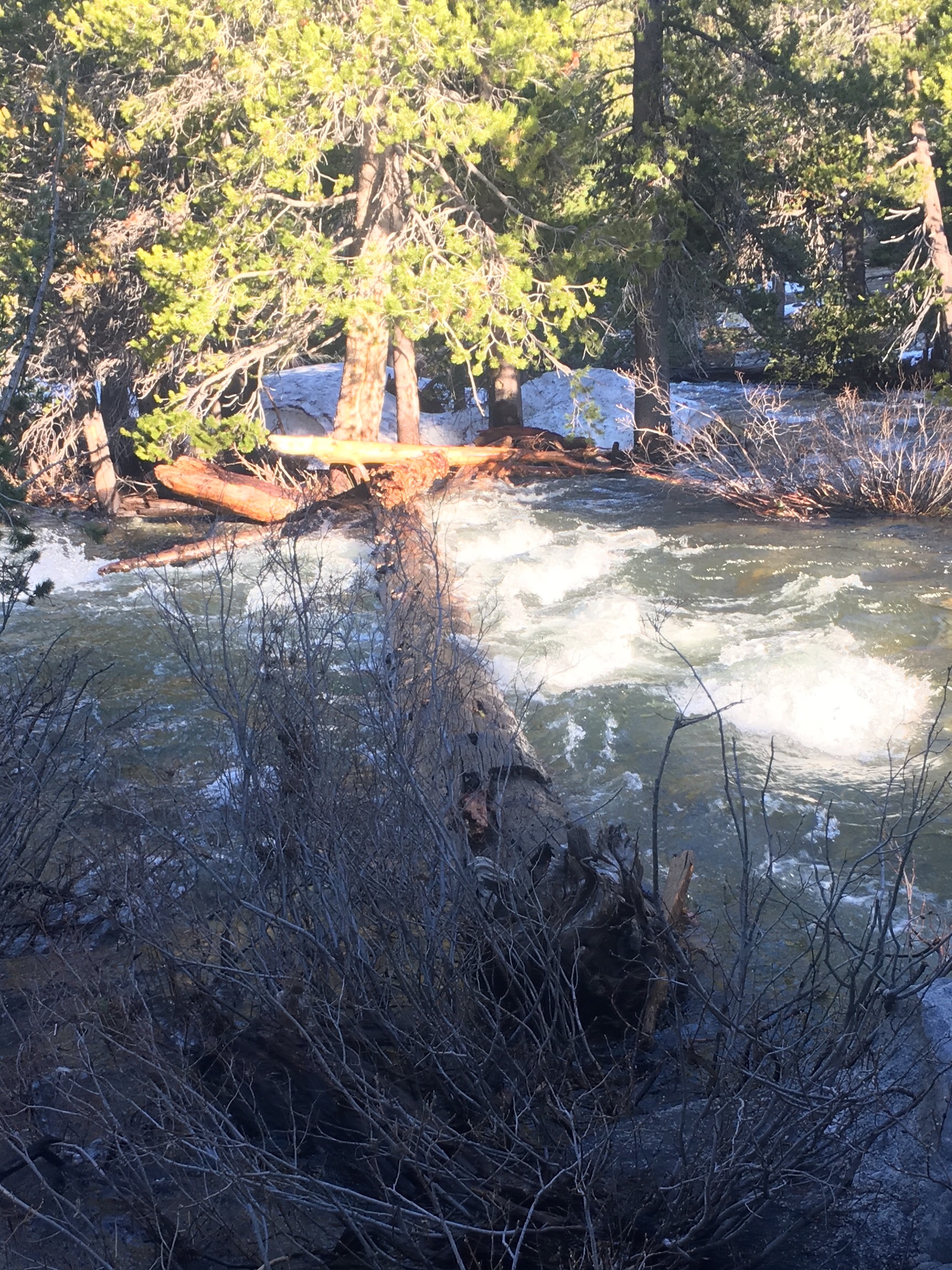 Still not great, but it’ll have to do.
Still not great, but it’ll have to do.
Being alone I felt empowered to do a better job managing risk, with less time pressure. I backed out of a treacherous crossing despite being a few feet from the opposite shore. I took out my ice axe to cut steps for just a few feet on a sketchy downhill traverse, even though I was tempted to simply go for it. It wasn’t the easy hiking I’d hoped for, but at the time I still felt confident that if I continued to use my head and kept my pace just right, I would reach Sonora Pass ready to rest several days before proceeding on the rest of the trail. Events unfolded somewhat differently.
During my last few days in the Sierra I faced a new concern: worsening illness. I’d been fighting a cold off and on since Kennedy Meadows, but after intensive recovery measures in Bishop I thought I’d essentially gotten over it. This was new. I would wake up in the night sweaty with chills, and stomach issues kept me from retaining desperately needed calories. By this point in the segment the only viable way out seemed to be through, and so I would set out on achy, wobbly legs each morning aimed towards Sonora Pass.
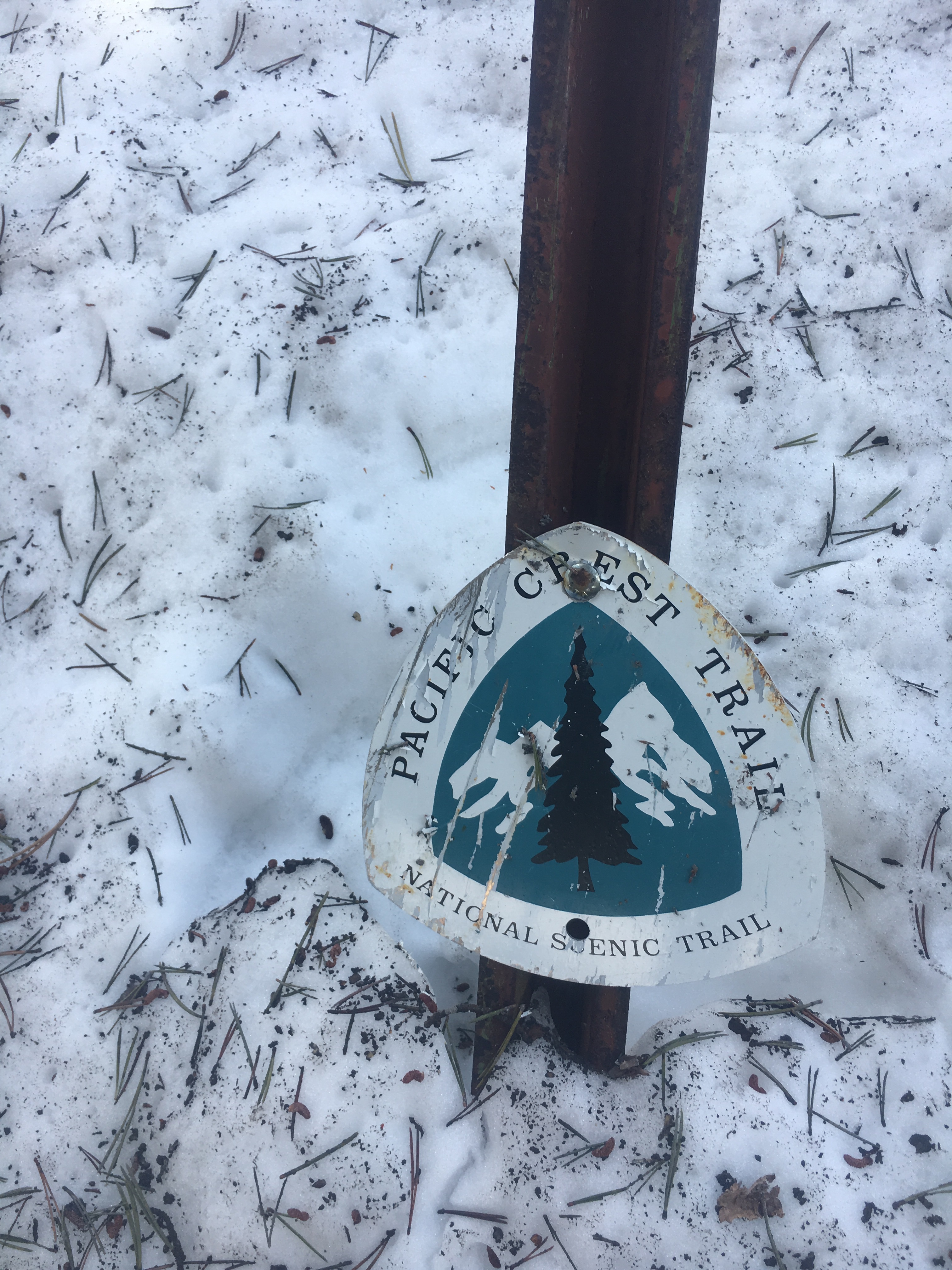 Really empathized with this trail marker.
Really empathized with this trail marker. 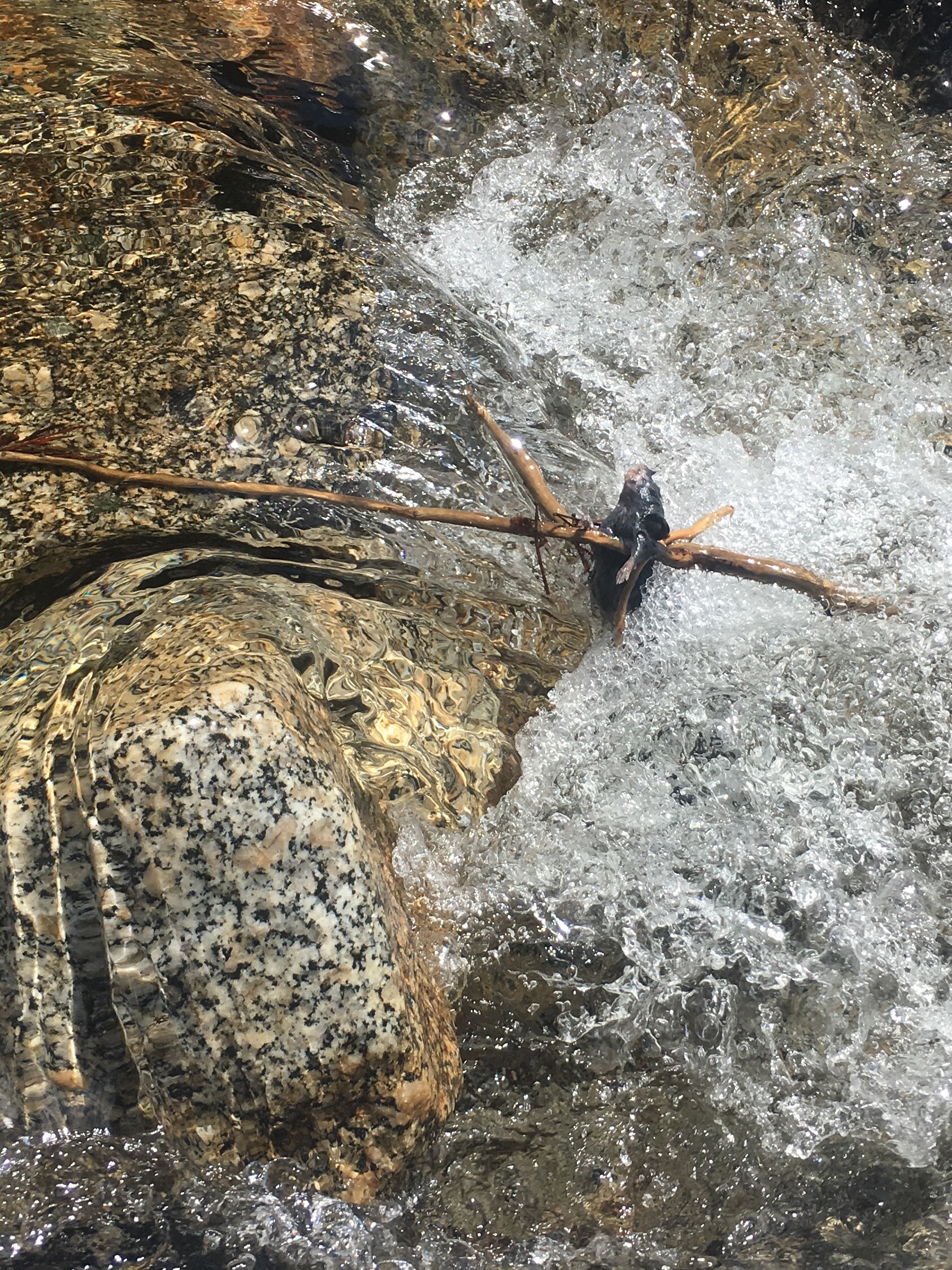 Still doing better than this poor guy, ew.
Still doing better than this poor guy, ew.
It was in this state that I reached Falls Creek. Crossing at the trail seemed impossible, barring perhaps a dicey swiftwater swim. I’d received word from ahead that there were snowbridges about six miles up the canyon, necessitating covering those miles cross-country across the creek from the trail route. So I set out to do so, navigating up relatively mild terrain and hoping I could cover the entire distance that afternoon. My body had other ideas, practically collapsing with sickness and exhaustion as I made camp three miles up, just short of Tilden Creek.
That night was one of the worst nights of my life. I woke up in a sweat, feeling very feverish. I took some Tylenol and hoped to get back to bed, but my stomach had other ideas. I groped for my headlamp, emerging from my warm sleeping bag into the cold night. I stumbled across icy snow to the one patch of dry ground. I threw up, repeatedly. Then I buried it, digging a hole after the fact and scraping it in best I could. I went back to sleep, but of course I awoke feeling awful and unsure as to how I could possibly make it the 12 miles that I had to that day.
I wouldn’t make it very far at all. Tilden Creek runs down a wall of the canyon, starting at a lake and feeding into Falls Creek. I had to cross it to proceed, but there were no viable crossings at the bottom. So I headed up, a difficult task in itself. I headed up to find a creek raging with blankets of whitewater, cascading steeply downhill around boulders and submerged logs. I found what seemed to be the only possible crossing: a log, partially overtopped by water, bridging water that did not look the least bit friendly.
I faced that log feeling a huge amount of fear and a little bit of panic. Thoughts bounced around my weary head faster than I could process them. I looked at the steps in the snow and tried to convince myself that if people had made it before, I probably could too. I tried to promise myself that if I could only get across, it would be smooth sailing from there. I thought about crossing there and back without my pack on just to get used to it, a truly stupid idea that I don’t know why I even considered. I still felt feverish, and my legs quaked under me– seemingly fully fatigued after walking about a mile. My gut feeling was that the crossing was bad news, my body lurching forwards and back almost subconsciously as misplaced courage battled well-founded apprehension. Meanwhile, the roar of the water was deafening.
Finally I took a few big steps away, throwing my pack down and promising to slow down and think it through. I did, and it was a damning assessment. I had no confidence that I would cross the log without incident, especially in my present state. Should I fall in, the whitewater, steep slope, and numerous obstacles downstream implied that I would either escape with serious injuries or possibly not escape at all. There was just no way. I’d already seen all my options downstream: not great. I looked upstream for a bit, but the terrain steepened even more heading to the lake. Still I forced my legs to carry me upwards some, and saw no places to cross. I considered heading up to the lake anyway, but I didn’t think I could head so far off-course and still reach the pass in my weakened condition. Nor did I have any idea what conditions would be like travelling cross-country in that area. Plus as I felt sicker and sicker, I realized there was a real possibility I could wake up the next morning too sick to move at all. Suddenly, finally, I realized I was in some serious trouble.
My mind shifted towards doing whatever it takes to get out of the backcountry, and I assessed my options. I pulled out my overview maps of the region, looking for any viable backtrack or alternate exit. There were none, or at least none I felt remotely comfortable attempting in my condition. I made one last attempt to cross the creek at the bottom, attempting to wade across even though the second half seemed far beyond my capabilities. It was, and I turned back. I guess I wanted to know that I’d done all I possibly could to leave under my own power, but it became clear to me that I was not going to be able to leave without some sort of assistance.
It felt strange, prying back the protective cover from the SOS button on my InReach. Nothing was broken. Blood wasn’t gushing out. I wasn’t lost. I still had a couple days of food. I could keep myself warm and dry. But I was very ill and out of options in an unforgiving environment, and I saw no point in trying anything rash and turning my slow-motion emergency into a more dire one. Better to call for help now, when I still had limited ability to move to a better rendezvous location, or to wait an extended amount of time if need be.
I held down the button and a countdown appeared on the display. Then I started crying. I cried for a long time. I felt disappointment in myself, embarrassed and apologetic that I had allowed myself to get into a situation where this was the only option. I also felt relieved that once in that situation, I’d made the right call. I thought this would probably end my hike, and I cried some more. I didn’t have much time to think at all. Minutes later, I heard the sound of a rotor slicing through the air and a helicopter appeared over the trees.